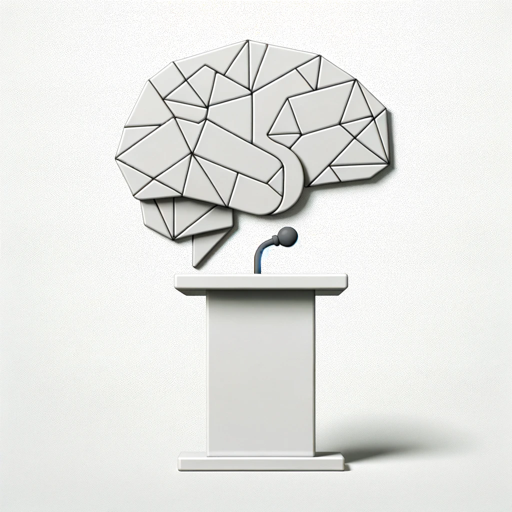The ATOM library tutor-MATLAB scripts for molecular modeling.
AI-powered molecular simulation in MATLAB.
How do I import structure files in ATOM library?
What is the syntax for the function replicate_atom?
List the available atom functions, and sort them into different categories
Guide me through creating a simulation box with the ATOM library
Related Tools
Load More
Chemistry Tutor
Advanced & engaging chemistry tutor, tailored for students.

Physics Tutor
Explaining Physics with Clarity and Insight

ChemistryGPT
Your go-to source for all things chemistry

chemistry
The world's most powerful chemistry tutor.

Advanced Physical Chemistry Tutor
Tutor for graduate-level physical chemistry.

Alpha Notes
Converts YouTube videos and web articles into personalized learning guides.
20.0 / 5 (200 votes)
Introduction to The ATOM Library Tutor
The ATOM (Atomistic Topology Operations in Matlab) Library Tutor is designed to assist users in molecular simulations using MATLAB. Its primary purpose is to automate and facilitate the construction and analysis of complex molecular systems, providing a comprehensive suite of functions for importing, manipulating, and exporting molecular structures. The library leverages MATLAB's struct variable, allowing for efficient handling of atomic and molecular properties. By using the dot notation, users can easily access and modify attributes such as atom types, coordinates, bonds, and angles. This capability is essential for tasks like translating, rotating, and slicing molecular structures, constructing simulation boxes, and performing advanced calculations. For example, to build a custom molecular system, a user might import a unit cell, replicate it, add ions and water molecules, and finally write the structure to a file. The ATOM library simplifies these operations, making it an invaluable tool for researchers and engineers working in molecular dynamics and Monte Carlo simulations.

Main Functions of The ATOM Library Tutor
import_atom
Example
oneunitcell = import_atom('someunitcell.pdb')
Scenario
Importing molecular structures from .pdb, .xyz, or .gro files into MATLAB for further manipulation and analysis.
replicate_atom
Example
mineral = replicate_atom(oneunitcell, Box_dim, [6 4 1])
Scenario
Replicating a unit cell multiple times to create a larger simulation box. This is useful in creating periodic structures for molecular simulations.
solvate_atom
Example
water = solvate_atom(...)
Scenario
Adding water molecules to a simulation box, which is crucial for simulating solvated systems such as biological molecules or hydrated minerals.
Ideal Users of The ATOM Library Tutor
Molecular Simulation Researchers
Researchers who focus on molecular dynamics and Monte Carlo simulations. They benefit from the ATOM library's ability to automate the creation and manipulation of complex molecular systems, saving time and reducing errors in setting up simulations.
Materials Scientists and Chemists
Scientists studying the properties of materials at the atomic level. The ATOM library helps them model and analyze the behavior of various materials, including minerals and polymers, by providing tools for structure manipulation and property calculation.

How to Use The ATOM Library Tutor
Visit aichatonline.org for a free trial without login, also no need for ChatGPT Plus.
Access the ATOM Library Tutor directly from the website without any account or subscription requirements.
Install MATLAB and the ATOM library
Ensure you have MATLAB installed on your system. Download the ATOM library from MATLAB File Exchange or GitHub. Add the library to your MATLAB path.
Import your structure files
Use functions like `import_atom` to read your molecular structure files (e.g., .pdb, .xyz, .gro) into MATLAB. This initializes your atom struct for manipulation.
Manipulate and build your system
Utilize various ATOM library functions such as `replicate_atom`, `ionize_atom`, `solvate_atom`, and `update_atom` to build and modify your molecular system as needed.
Export and analyze
Write your final molecular system to desired formats using `write_atom_*` functions. Analyze properties and visualize structures with functions like `vmd` or `plot_atom`.
Try other advanced and practical GPTs
Politik GPT
AI-powered insights for political success

Study Buddy
AI-powered study assistance for students.

Tattoo GPT
AI-powered tattoo design and advice

BestFriend GPT
Your AI-powered best friend for all conversations.

Bitcoin Simplifier
AI-powered tool to simplify Bitcoin.

Vegan Chef Bot
AI-powered vegan recipe assistant for creative plant-based cooking

Code Animator
Animate Your Code with AI Power

NattafortellingGPT (3-7 år) med bilder 🪄
AI-powered bedtime stories for kids

Chart Analyst
AI-powered trading insights for professionals

Web Hacking Wizard
Empower Your Web Security with AI

FOIA GPT
AI-powered tool for FOIA requests

Weather GPT
Snarky Weather Updates, Powered by AI

- Data Analysis
- Simulation Setup
- Topology Creation
- Molecular Modeling
- Structure Visualization
Detailed Q&A about The ATOM Library Tutor
What is the ATOM library and what can it do?
The ATOM (Atomistic Topology Operations in Matlab) library is a collection of MATLAB scripts for building, manipulating, and analyzing molecular simulation cells. It can handle complex molecular systems, generate topological information with bonds and angles, and support both molecular dynamics and Monte Carlo simulations.
How can I import structure files into the ATOM library?
You can import structure files using functions like `import_atom`, `import_atom_pdb`, `import_atom_xyz`, and `import_atom_gro`. These functions read .pdb, .xyz, and .gro files into MATLAB, initializing the atom struct for further manipulation.
How do I add water molecules to my simulation box?
Use the `solvate_atom` function to add water molecules. This function solvates a defined region with a specified density of water molecules, creating a hydrated environment for your simulation.
Can the ATOM library handle periodic boundary conditions?
Yes, the ATOM library supports periodic boundary conditions (PBC). Functions like `dist_matrix_atom` and `bond_angle_atom` take PBC into account, allowing for accurate generation of topologies with bonds across boundaries.
How do I visualize my molecular system using the ATOM library?
You can visualize your molecular system using functions like `vmd(atom, Box_dim)` if VMD software is installed. Alternatively, the `plot_atom(atom, Box_dim)` function provides a quick way to plot a full simulation box within MATLAB.